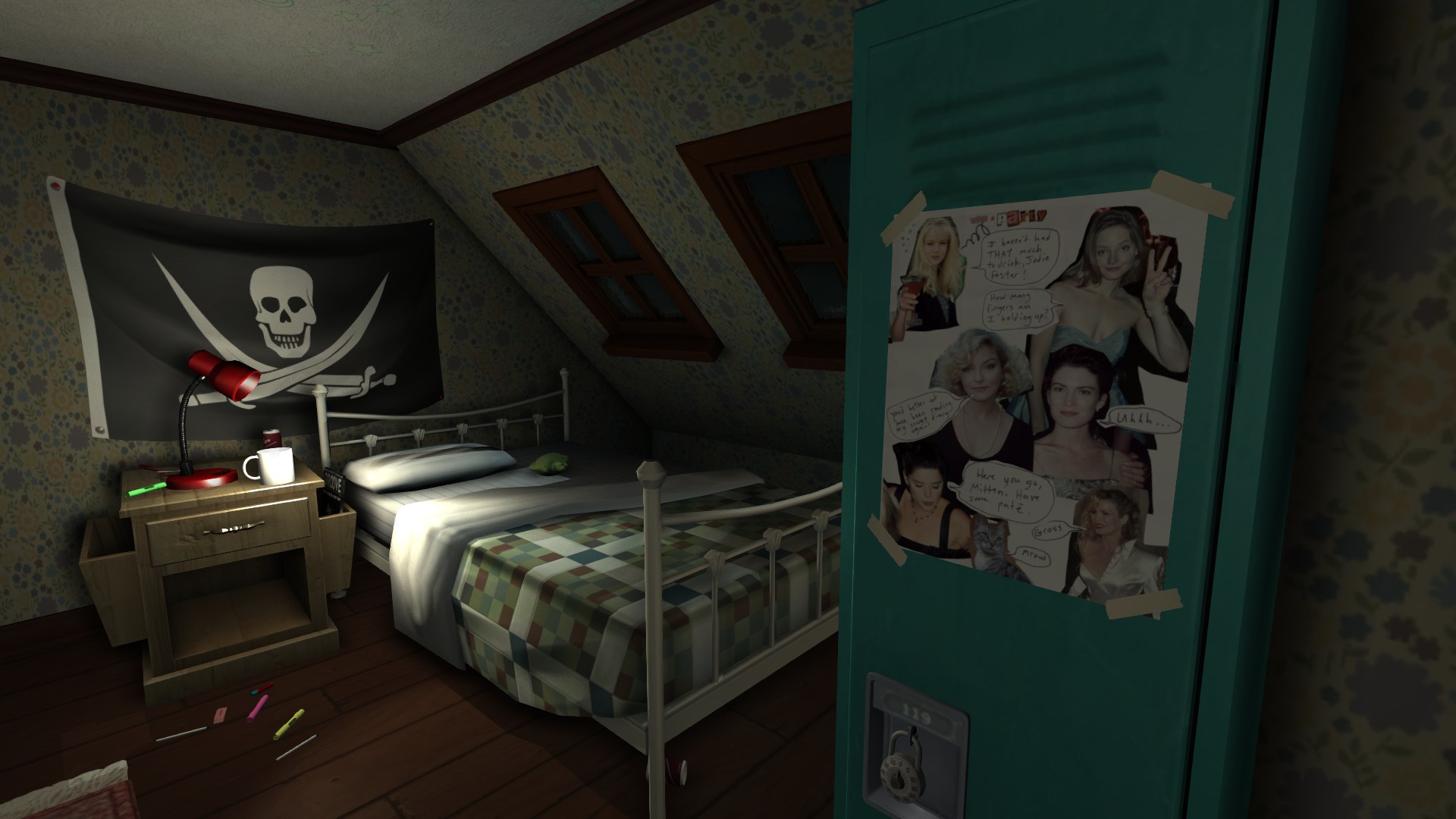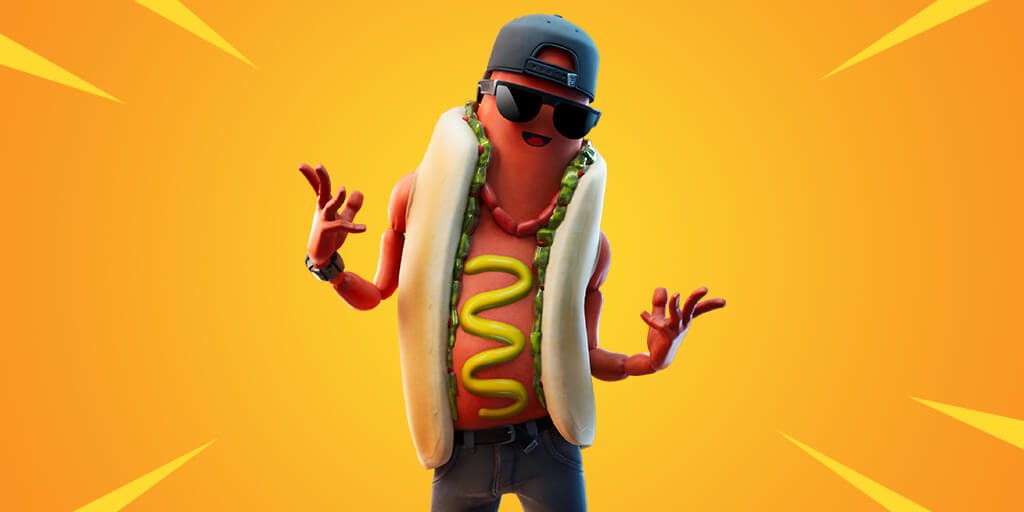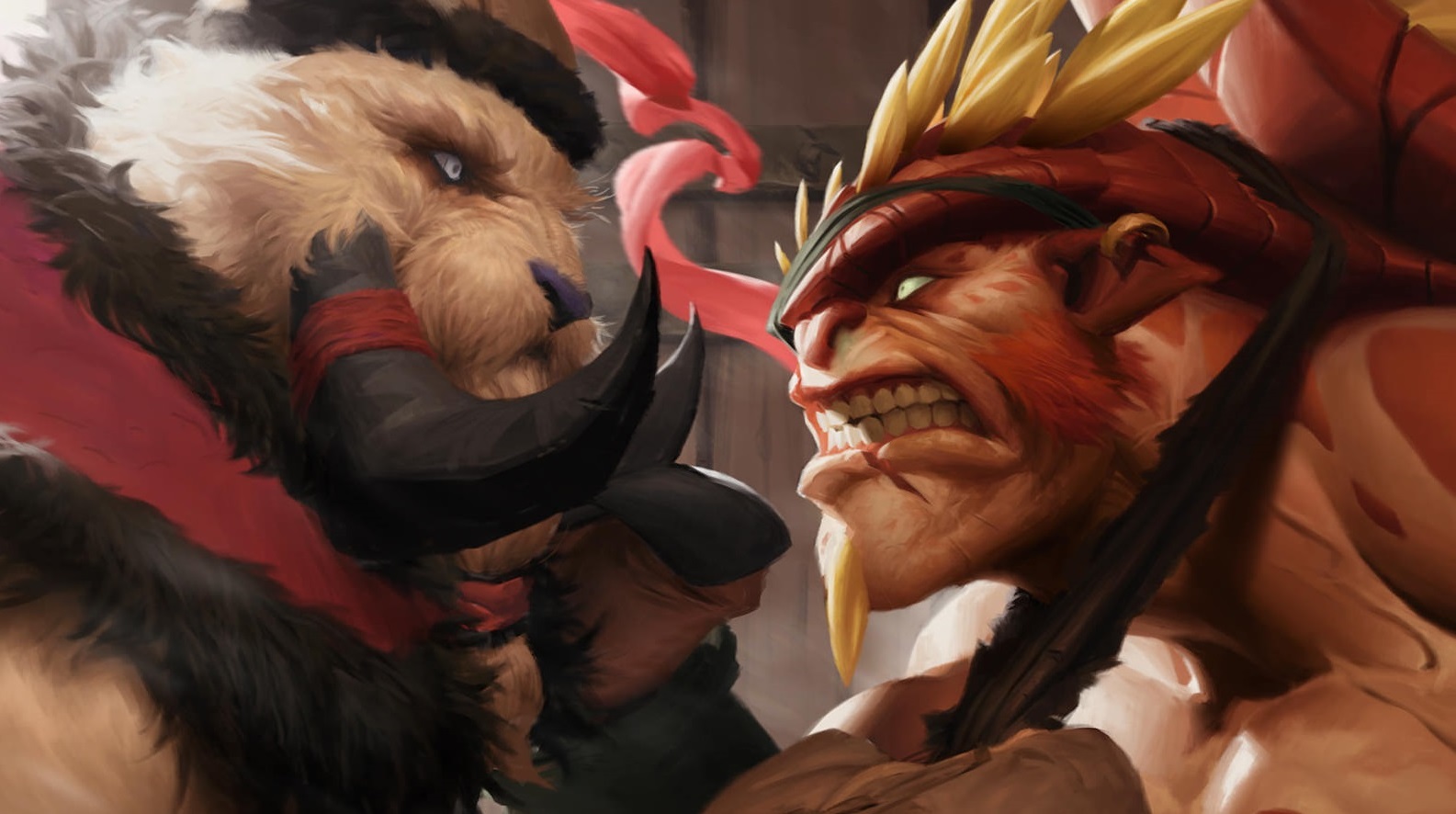The most important PC games of the decade
25 influential games that defined 2010-2019.
XCOM (2012)

Sometimes a game can rescue an entire genre. We enjoyed some niche turn-based strategy games before Firaxis' spectacular XCOM reboot, but this game pulled the genre closer to the mainstream with cinematic production values, a friendly art style, and—most importantly—a set of XCOM recruits that inspire tremendous empathy across the course of a long and gruelling campaign. You can build a beautiful numbers system based on gear power and chances to hit, but it's something else to translate those stats into drama. It's the drama that makes you hold your hands to your head and cry "nyoooo" when Sergeant "Balls Balls" misses a Chryssalid at point-blank range and is immediately murdered halfway through a mission.
That might seem frivolous, but that reboot has no doubt inspired many new XCOM style games in different settings. There are obvious examples like Phoenix Point, but we've also seen weirder games like Mutant Year Zero. You could even look at games like Into the Breach and claim that XCOM: Enemy Unknown opened a door to new audiences that would appreciate such a beautifully balanced tactics game. Turn-based tactics games have done surprisingly well on console, if you take into account Pokemon, Advance Wars, Shadow Emblem, Final Fantasy Tactics, Tactics Ogre, and more. XCOM: Enemy Unknown went back to the source - an old, obtuse, but brilliant game - and modernised it perfectly, bringing tactics games back to their old home on the PC. —Tom Senior, Online Editor

Dark Souls (2012)
How many games can brag about birthing a genre? It's a short list. First there was Rogue. Until we all got some collective sense and christened the first-person shooter, there was the Doom Clone. Metroid and Castlevania fused into a beloved style with a hated name. And this decade, From Software gave us the Souls-like. No other game in the 2010s has more dramatically changed how we talk about games, particularly difficulty. Nothing has so quickly inspired so many knock-offs.
More importantly for us, Dark Souls is the reason I can browse Steam today and see games like Ni No Kuni, Nier: Automata and Bayonetta. It may be the only time in history an online petition changed the world. Something like 90,000 people said they wanted it, and publisher Bandai Namco made it happen.
From there, Dark Souls' influence carved three new trails. It sold and sold and sold, and so did the sequels, making From Software the most respected developer in Japan not named Nintendo. Its success on PC in the west encouraged other Japanese developers to bring their games over, too, and today it's rare for big Japanese games (or even indies) not to launch on PC, or at least get a delayed port. Finally, Dark Souls made the internet realize just how important modders are to PC gaming. Without Durante's DSFix mod, which repaired an egregiously slipshod port, the series may never have taken off on PC. The standards for quality ports are now far higher. Meanwhile, From Software got George R. R. Martin to help write its next game, Elden Ring. It'll probably be out before his next book. —Wesley Fenlon, Features Editor

Gone Home (2013)
The Fullbright Company had no idea that its first-person atmospheric exploration game would cause quite the cultural shift in the video game world to the interest (and anger) or many critics and fans. Gone Home's empty house opened the door to a discussion that got right to the heart of the gaming community: What exactly makes a video game a video game?
In Gone Home, you play as Katie, a young woman who has arrived at her family home to find it completely empty. The story unfolds as you walk around the house, exploring its rooms and picking up objects, and you slowly begin to learn about the circumstances surrounding the families disappearance. As you walk around the house, exploring rooms and picking up objects, Gone Home slowly reveals a compelling family drama and tells a sincere story about the struggles of being a queer teenager living in the 1990s.
Keep up to date with the most important stories and the best deals, as picked by the PC Gamer team.
Gone Home built upon the foundations of a new emerging genre—games like The Chinese Room's Dear Esther had paved before it—but it's play style and storytelling was not celebrated by all players. Due to its emphasis on exploration through walking, Gone Home was dubbed a "walking simulator," a game in which there is no gameplay and thus, not a game.
Since 2013, we can see how Gone Home has made an important shift in the video game community. The walking simulator genre is now a place where games can focus on telling diverse narratives through top-notch writing and engaging exploration. Gone Home's design led the way for more exploration games to emerge such as Firewatch, Layers of Fear, Everybody's Gone to the Rapture, and What Remains of Edith Finch. Gone Home's release challenged the way in which videogames are played, experienced and defined which makes it an important game of the decade. —Rachel Watts, Staff Writer

Broken Age (2014)
Kentucky Route Zero was funded on Kickstarter in 2011, as was Octodad: Dadliest Catch. The amounts were modest: $24,320 for Octodad and a mere $8,583 for Kentucky Route Zero. When Double Fine turned to Kickstarter in 2012 to fund their next adventure game and a documentary to go with it, they asked for $400,000 and received $3.3 million.
The effect was sudden. A month later Wasteland 2 raised $2,933,252, and Shadowrun Returns $1,836,447. People who'd made Kickstarter accounts to give Double Fine money were hanging around looking for other projects to back, and everyone with an intellectual property in an underserved genre was there to collect.
Genres that had been largely abandoned—or left to the bedroom coders and Germans—were resurrected and built on. Broken Age, like a lot of the Kickstarter success stories that followed it, asked the question: "What if we never stopped making games like this? What would they look like today?" Subsequent crowdfunded games like Divinity: Original Sin 2 and Project Phoenix continued providing the answers.
The last big videogame success story on Kickstarter was Subverse, which raised over $2 million. Before that it was Pillars of Eternity in 2017. The million-dollar hits still happen, but are fewer and farther apart than they were in the boom years of 2012-2015.
If you've got a board game with a lot of components, or your name's Chris Roberts, there's still big money in crowdfunding, but mostly it's more modest games being funded by fans these days, and often away from Kickstarter—like Outer Wilds, which was backed through Fig.
The influence of the Kickstarter boom isn't over, but the gold rush certainly is. There's no better sign of that than Double Fine cheerfully being acquired by Microsoft in 2019. —Jody Macgregor, Weekend Editor

The Witcher 3: Wild Hunt (2015)
In the 1970s, Barack Obama was Barry, a high school student with the basketball skills to help win a state championship in his senior year. By the time he transferred to Columbia University to study political science, you could probably tell he was going places—but president of the United States? President Barry was probably not on anyone's radar, back on the basketball court. Likewise, in 2007, if you'd told anyone on an internet videogame forum that a sequel to a messy RPG, made by an inexperienced Polish studio, would be the biggest and best RPG of the next decade, they'd probably laugh you off the board. Really? That game? The Witcher? Sure, it's got some good ideas, but it's barely bolted together, and who's ever heard of these Polish fantasy novels? That's never going to be big.
Anyway, what I'm saying is: Geralt is basically the President of PC games now.
The Witcher 3 followed a pair of much smaller RPGs with a vast open world, and filled that world with writing (so much writing) that elevated standard sidequests into memorable hunts, heartbreaking stories, and wonderful adventures. With two games of practice, CD Projekt Red learned how to make Geralt a perfect vehicle for players. He's a person, not a blank slate, which enriched the impact of every decision you were forced to make. The average Witcher 3 sidequest is more creative or better presented than the main story of most RPGs, and then it went and did that part better, too.
The Witcher 3's truly massive success entered CD Projekt into the elite ranks of the most respected game developers in the world. When was the last time a game was as hyped as Cyberpunk 2077? Maybe never. When it's finally real, it'll have remarkably high expectations to live up to: expectations that it'll be as good as The Witcher 3, the benchmark for RPGs this decade. And quite possibly the next. Way to go, Gerry. —Wesley Fenlon, Features Editor

No Man's Sky (2016)
Hype can be dangerous, and there's no better example this decade than No Man's Sky. Long before Hello Games' ambitious procedural galactic sandbox launched, the hype was already in orbit. Early trailers in 2014 showed off towering, graceful alien dinosaurs and sandworms the size of freight trains. A VP at Sony declared No Man's Sky as "potentially one of the biggest games in the history of our industry." The media—PC Gamer included—stirred the pot by getting swept up in the potential of an endless, infinitely varied galaxy. The game would be so big there was nearly no chance of meeting another player, but we were told they'd be out there, somewhere. We wanted to believe.
As the release date loomed, Sean Murray tried temper player expectations but it was already too late. The hype train was well off the rails. By the 2016 launch, expectations were so high there was no way any game could possibly deliver on all of them. The reality was that No Man's Sky's alien dinos weren't nearly as towering and majestic as those seen in trailers. The massive sandworm that had captured people's imaginations had been cut from the game before launch. There were plenty of beautiful planets and sights, but before long the procedurally generated features began to feel a bit predictable, like the same handful of parts used to build creatures and planets were just being assembled in slightly different configurations.

And there was that vaguely defined multiplayer aspect—"Online Play" was even listed on the PS4 box, though it was covered by a sticker—when the reality was there no multiplayer feature at all and the two players who found each other (on the first day, no less) couldn't actually see each other. The blowback for No Man's Sky came in just as frenzied as the hype had, and from the same places: the players, the media (yes, PC Gamer too) and even from Sony.
But Hello Games demonstrated how a studio can survive both the highs of hype and the lows of backlash. It stepped back from the press that had been eager to pounce on every tiny shred of new information, it filtered out the voices of those who only wanted to pile on more grief, and it focused on the feedback of the only people who really mattered: the players who actually loved No Man's Sky despite its issues, who were actually playing the game and who saw its potential to continue to grow. And over the past several years an astounding number of new features have been added to No Man's Sky, all for free, giving players new and different ways to explore the galaxy or build a home on their favorite world. We never got our sandworm (apparently it was cut because playtesters hated it) but that vague multiplayer feature missing at launch was added and then greatly improved upon. No Man's Sky isn't just a place you can briefly meet another player, it's become a true multiplayer experience. That's a height even the initial hype never reached. —Christopher Livingston, Staff Writer

Star Wars: Battlefront 2 (2017)
There were a few problems with Battlefront 2's planned economy, but the primary issue was that class upgrades came in loot boxes that could be obtained with both in-game and premium currency. These weren't just cosmetics: You could pay to get an advantage over those who were grinding. It wasn't the most exploitative use of randomized rewards at the time, and EA put a hold on premium currency at launch due to backlash, but that didn't matter. Battlefront 2 was a watershed moment for anti-loot box sentiment, and led to regulation in Belgium and elsewhere, as well as continued investigations and debates in the US, UK, and around the world. Overwatch, FIFA, and other games contributed, but Battlefront 2 marked a turning point. After it released, loot boxes were no longer just the subject of grumbles from dissatisfied players, but also of legislative debates over whether or not they should be classified as gambling.
Many games, most recently Rocket League, have ditched loot boxes to focus on battle passes and other paid progression systems without randomization. While a few have held onto loot boxes—EA makes gobs of money off FIFA—they're clearly on their way out. Battlefront 2 is a good game, especially after the changes to its progression system, but unfortunately for DICE's talented developers, it will be remembered for instigating an industry-wide upheaval in how games are monetized. —Tyler Wilde, Executive Editor

Butterfly Soup (2017)
When the tools to make and distribute games were democratized in the 2000s, we sure did get a lot of puzzle-platformers out of it. The impact was felt further afield in subsequent years, and one genre where that impact was felt was the English-language visual novel.
Visual novels have always been about relationships, whether in the classic dating sim sense or the deepening characters even something as superficially silly as Phoenix Wright: Ace Attorney has. Among the flood of visual novels in the 2010s were a batch made by a generation of LGBTQ+ game designers and informed by their own experience of relationships games rarely dealt with. Games like Ladykiller in a Bind, Coming Out on Top, Extreme Meatpunks Forever, Genderwrecked, and Dream Daddy (highly recommended: The episode of Tone Control where Dream Daddy co-writer Leighton Gray talks about its creation and the realization if she went ahead with it she'd need to come out to her parents).
Butterfly Soup is about teenagers questioning their sexuality (it's also about baseball and dogs but mainly it's the sexuality thing), and like a lot of those other examples it's largely wholesome. It touches on familial abuse, but it's a very light touch and it's not the kind of game where you'll have to choose between your lesbian girlfriend and the lives of an entire town at the end. It's radically positive in a way a lot of games about LGBTQ+ characters are when made by LGBTQ+ people.
It's also free. That's important because Butterfly Soup, with its examples of teenagers learning about their queerness in a way that's framed as a positive experience, is exactly the kind of game a certain kind of teenager needs to play—and they also need it to not show up on their parent's credit card. The significance of that, both for what videogames can meaningfully achieve and what Butterfly Soup means for the kids it's perfect for, can't be overstated. —Jody Macgregor, Weekend Editor

PUBG (2017)
Like Dota and Team Fortress before it, PlayerUnknown’s Battlegrounds began life as a mod—for DayZ. There had been other Battle Royale-inspired mods before it, including a Hunger Games Minecraft mod in 2012. But creator Brendan Greene refined the concept with innovations including weapons being randomly scattered around the map. When Battlegrounds eventually became a standalone game in 2017 its popularity exploded, legitimising the genre and ultimately paving the way for Fortnite.
In a group Battlegrounds is a thrilling, tactical squad shooter; solo it’s like a big-scale stealth game where the ‘guards’ are all unpredictable human players. Both are valid ways to play, each with its own unique rhythm and feel. There are some similarities to DayZ: a large map with a bleak aesthetic, permadeath, player interaction, and a constant feeling of tension. But the rapidly shrinking play space in PUBG makes for a much more immediate, action-packed game, which made it particularly fun to watch on Twitch—another reason the game became so popular. It was simply more fun to watch on a stream than DayZ.
There’s something wonderfully simple about the battle royale concept. A hundred players enter, one player leaves. Perfect for an online shooter. Brendan Greene was by no means the first person to try and turn the premise of the cult Japanese film into a game; he just refined it, laying the groundwork for an entire genre in the process, whether he meant to or not. The popularity of battle royale can’t be understated, and it’s wild to think that it’s reached a level of cultural saturation where a clip from a new Star Wars is being screened exclusively in Fortnite. But it all started with PlayerUnknown’s Battlegrounds. —Andy Kelly, Section Editor

Fortnite (2017)
Who said it? Who at Epic Games—during whatever meeting about the questionable outlook of its cooperative base building game finally entering early access after nearly seven years in development, announced in 2011 and delayed multiple times since—who said, "Maybe we could turn it into PUBG?" There's never been such a rapid, derivative, and successful pivot as this: Fortnite's barebones battle royale mode was made in two months. And it wasn't even good.
But, unlike the then-phenom PUBG, Fortnite: Battle Royale was and still is free-to-play. It didn't matter that the building system wasn't made for twitch shooting in a 100-person free-for-all or that the map began as a featureless wasteland. What mattered is that when kids with no money logged into PSN, Xbox Live, or Googled "free PC games," Fortnite was there, with its colorful island, smiling cartoon combatants, and potent arsenal of dance emotes. Raise your hand if you saw someone floss this year.
Fortnite was poised to be a temporary craze, but Epic kept it growing with an unprecedented update schedule, introducing new weapons, items, vehicles, and major balance changes on a near-weekly basis. In-game events like the meteor impact or epic mecha vs. kaiju battle took Team Fortress 2's narrative and update integration to a new damn dimension. Within months, a derivative game became one of the most exciting shooters ever, a game whose meta mattered as much as its living mythology.
Fortnite was already massive, but then Ninja streamed with Drake. Suddenly, Fortnite wasn't just how you became a successful Twitch streamer, it was how you became a star. In just a few years, Fortnite legitimized a new kind of celebrity, changed what we expect from F2P and service-based games, and, most miraculously, made flossing cool. All because of a last-second design pivot. What the hell. —James Davenport, Staff Writer

Devotion (2019)
In another life Devotion would have been an enjoyable but otherwise unremarkable Taiwanese horror game. But when players discovered some hidden text that compared the president of China, Xi Jinping, to Winnie the Pooh (an outlawed meme in China), Devotion became the unexpected casualty of communist censorship and Taiwan's tumultuous relationship with mainland China. Initially Devotion was review-bombed by Chinese users upset at the perceived insult to their nation and its government, but then the controversy drew the ire of the Chinese communist party itself.
Though censorship has always been an issue in gaming, Devotion's sudden disappearance set a chilling precedent. The Chinese government erased its existence from Chinese social media and search results in a matter of days and later revoked the business license of its Chinese publisher. Meanwhile, the developers at Red Candle Games voluntarily pulled the game from Steam and went radio silent—presumably to escape the tidal wave of outrage and risk of further retribution.
The incident is a reminder of how much influence Chinese gamers, and by extension their government, can have over the videogame industry. More importantly, Devotion highlights how Steam has unexpectedly become a bridge in the firewall between China and the rest of the world—and how quickly that bridge can turn into a battleground. —Steven Messner, Senior Reporter

Artifact (2019)
In retrospect, I should have suspected that there was something wrong with Artifact. My first exposure to the game, during the reveal at Valve's Bellevue HQ, left me with a splitting headache, but otherwise enthusiastic about such a deep, polished entry to the card battler genre. After all, there was plenty to be confident about. This was Valve's first game proper in five years, something akin to Willy Wonka announcing he was resuming production because he had a particularly delicious nougat to share. And this CCG was being made not just by Valve's own braintrust, but also Richard Garfield, legendary creator of Magic: The Gathering. Artifact was his new baby, it couldn't fail.
But it did in such spectcaular, flameout style that it has secured Artifact a place here, among the decade's most noteworthy games. Prior to Artifact, even if you suspected that Valve, the closest thing to a platform holder we have on PC, was capable of making a bad game, nobody imagined it releasing such a catastrophic one. But just six months after Artifact's launch, the game had been abandoned so entirely that its Twitch directory was being overrun by people streaming obscure African war movies, anime, and actual pornos. Incredibly, it took some time for anyone to even notice.
The failure seem almost unfairly easy to analyse with hindsight. The three-lane structure borrowed from Dota made board states inherently taxing to remember, and was a poor fit for stream viewership. More problematically, as card game pro Andrey "Reynad" Yanyuk noted in his firm but fair evaluation, the game just wasn't much fun. Too much of the combat revolved around stacking multiple arithmetical effects, rather than delivering the kind of one-off flashy moments that Hearthstone specializes in. Artifact's player population soon dropped to embarrassing numbers, and in March Valve effectively mothballed Artifact, citing "deep-rooted issues" with the game but promising to get back to us once it had a plan. Since then recriminations have been made by Garfield, who's no longer attached to the project. I'd be amazed if we ever see Artifact rebooted meaningfully. Instead, it will serve as a reminder that just as no-one is too big to fail in modern PC gaming, nor can they be too talented. —Tim Clark, Brand Director

Evan's a hardcore FPS enthusiast who joined PC Gamer in 2008. After an era spent publishing reviews, news, and cover features, he now oversees editorial operations for PC Gamer worldwide, including setting policy, training, and editing stories written by the wider team. His most-played FPSes are CS:GO, Team Fortress 2, Team Fortress Classic, Rainbow Six Siege, and Arma 2. His first multiplayer FPS was Quake 2, played on serial LAN in his uncle's basement, the ideal conditions for instilling a lifelong fondness for fragging. Evan also leads production of the PC Gaming Show, the annual E3 showcase event dedicated to PC gaming.
- Steven Messner
- Jody MacgregorWeekend/AU Editor
- Wes FenlonSenior Editor
- Christopher LivingstonSenior Editor

